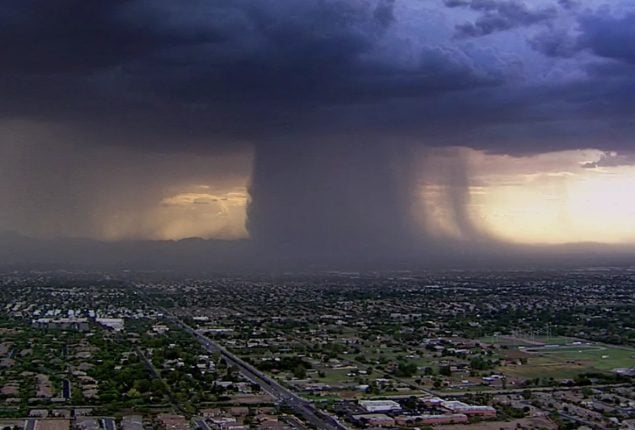African heatwave’s deadly toll directly linked to Global Warming
Last month, temperatures in Mali soared above 48C, leading to hundreds of...

How global warming is making cloudbursts deadlier?
Sudden, violent bursts of extreme rainfall are wreaking havoc across South Asia’s mountain ranges. In recent weeks, torrents of water and mud have ripped through villages in Pakistan and India, flattening homes, killing hundreds, and leaving many missing.
At the heart of this devastation are cloudbursts — short, furious downpours that strike with little warning. Scientists warn that climate change is making them more frequent and more destructive.
A cloudburst is an intense and highly localized rainfall event, often dumping more than 100 millimeters (4 inches) of rain in just an hour. In the Himalayas, Karakoram, and Hindu Kush — where steep slopes, fragile rock, and narrow valleys funnel rainwater — such downpours can instantly trigger deadly flash floods and landslides.
They usually occur during the monsoon season, when moisture-laden air from the oceans collides with towering mountains, cools rapidly, and condenses into heavy clouds. When those clouds suddenly collapse, entire valleys can be submerged within minutes.
Unlike larger storm systems, cloudbursts are hyper-local and extremely difficult to predict. Their speed and intensity leave residents with little time to react. The region is also data-scarce, with limited weather monitoring stations, making forecasting even harder.
The danger is compounded by deforestation, unplanned construction, and weak disaster preparedness. Many homes are built along riverbanks or on mountain slopes, where even a brief flood can wipe out entire communities. The absence of robust early-warning systems and poor communication infrastructure often leaves people without alerts before disaster strikes.
Global warming is amplifying the threat. Warmer air can hold about 7% more moisture for every degree Celsius of warming, which means today’s storms carry more water than in the past. When this moisture-laden air is forced up steep mountain slopes, it can unleash massive amounts of rain within minutes.
Warmer oceans, including the rapidly heating Indian Ocean and Arabian Sea, are adding extra moisture to the monsoon. Combined with hotter land temperatures, this raises the likelihood of extreme rainfall.
In recent years, record-breaking heatwaves across South Asia have been followed by bursts of catastrophic rain. Melting glaciers further increase the risk by creating unstable lakes and fragile terrain, which magnify the destructive power of sudden downpours.
Pakistan, responsible for less than 1% of global greenhouse gas emissions, is among the most climate-vulnerable nations. In 2022, historic monsoon floods killed nearly 2,000 people and caused $40 billion in damage. Since then, deadly floods have returned every year.
The monsoon itself is changing under climate stress. Longer dry spells are now punctuated by shorter but far more intense bursts of rain. Heavy rainfall events across India, for instance, have tripled in recent decades.
This year, Pakistan has endured both drought and devastating floods in the same month, disrupting food production and worsening its already severe water crisis.
The Himalayas, Karakoram, and Hindu Kush span eight countries, and extreme weather in one often spills into another. Yet regional cooperation on water and climate management remains limited, with political rivalries hindering collective action.
Agreements such as the Indus Water Treaty, which governs shared rivers between India and Pakistan, are increasingly outdated in the face of new climate realities. Experts argue that updated treaties and stronger cross-border collaboration will be critical to managing future risks.
Resilience will also depend on avoiding construction in hazard zones, halting deforestation, investing in early-warning systems, and building infrastructure that can withstand extreme weather.
The devastation unfolding in Pakistan, India, and Nepal offers a stark warning of what 1.2°C of global warming already looks like. Yet the world is on track for nearly 3°C of warming by the end of the century.
Every fraction of a degree, scientists warn, means more lives at risk from disasters like cloudbursts. For the millions who live in the shadow of South Asia’s mountains, the question is no longer whether these disasters will strike — but how prepared their governments will be when they do.
Catch all the Pakistan News, Breaking News Event and Latest News Updates on The BOL News
Download The BOL News App to get the Daily News Update & Follow us on Google News.